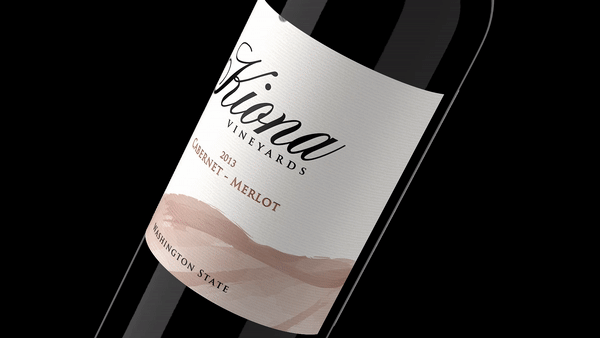
Introducing Estates Cuvée
Cabernet - Merlot Has A New Look And A New Name
In the mid 1990s, Kiona Vineyards and Winery had just a shade over 60 acres under vine on Red Mountain. Most of the fruit was used in our own production. We hadn’t planted many of the varieties that are now stalwarts in our lineup, like Sangiovese, Syrah, Malbec, Petit Verdot, Carmenère, and others. Heart of the Hill was just a dusty swath of desert and Ranch at the End of the Road was more of a ranch than a vineyard. The Red Mountain AVA didn’t even exist yet (our estate wines were Yakima Valley-designated).
We launched Cabernet-Merlot in that timeframe. The goal was to blend high-end material from our estate programs into a tasty and affordable wine that dramatically out-performed its price point. As a staple glass-pour at restaurants and a “one-wine-quiver” for savvy end-consumers, Cabernet-Merlot has performed exactly as intended over the last 20 years.
But times have changed. We now farm more than 300 acres of wine grapes across several sites in two AVAs. More than 60 of the top winemakers in the Pacific Northwest trust us as a supplier for their high-end fruit. Suffice it to say we are a much different organization now in 2017 than we were twenty years ago.
Over the past several vintages it has become more and more apparent to us that the most interesting and distinguishing feature of Cabernet-Merlot was not its varietal composition, but its geographical composition. We are an estate brand with multiple high-end, esteemed sites. The fact that we are using all of them to blend a single wine is something that few other wines—in a price point dominated by bulk wine and geographically agnostic sourcing—can claim.
After many years and several spirited discussions, we landed on a name that we think conveys both the philosophy and quality of the wine we have been producing for more than two decades. The name ‘Kiona Vineyards Columbia Valley Estates Cuvée’ is essentially a definition: it’s a red wine blended from all of Kiona’s estate sites in the Columbia Valley.
By removing the emphasis on varietal composition, changing from a Washington State designation to a Columbia Valley designation, and focusing on geography and vineyard composition, we feel the new name is more marketable, accurate, and informative than its predecessor.
The back label includes variety percentages, as well as an AVA breakdown of the wine’s vineyard sources. The 2014 version is 57% Columbia Valley and 43% Red Mountain.
After all, the goal is to blend high-end material from our estate programs into a tasty and affordable wine that dramatically out-performs its price point.
A quick note on AVA designations. This wine is a Columbia Valley-designated product. So how, you may ask, are we able to call it Columbia Valley when the label indicates that it only contains 57% Columbia Valley fruit? It’s what I would describe as a “square is a rectangle, but a rectangle is not a square” situation. The Red Mountain AVA is fully contained within, and considered part of, the Columbia Valley. So wine grapes grown in the Red Mountain AVA are, in fact, Columbia Valley fruit. But only fruit gown in/on Red Mountain, because it is a smaller and more geographically defined area, can be called Red Mountain. It is accurate to say that this is a 100% Columbia Valley wine. We are providing an extra layer of detail in breaking down exactly where in the Columbia Valley the grapes originate. Here is a simple (not to scale) visual representation of that relationship.

